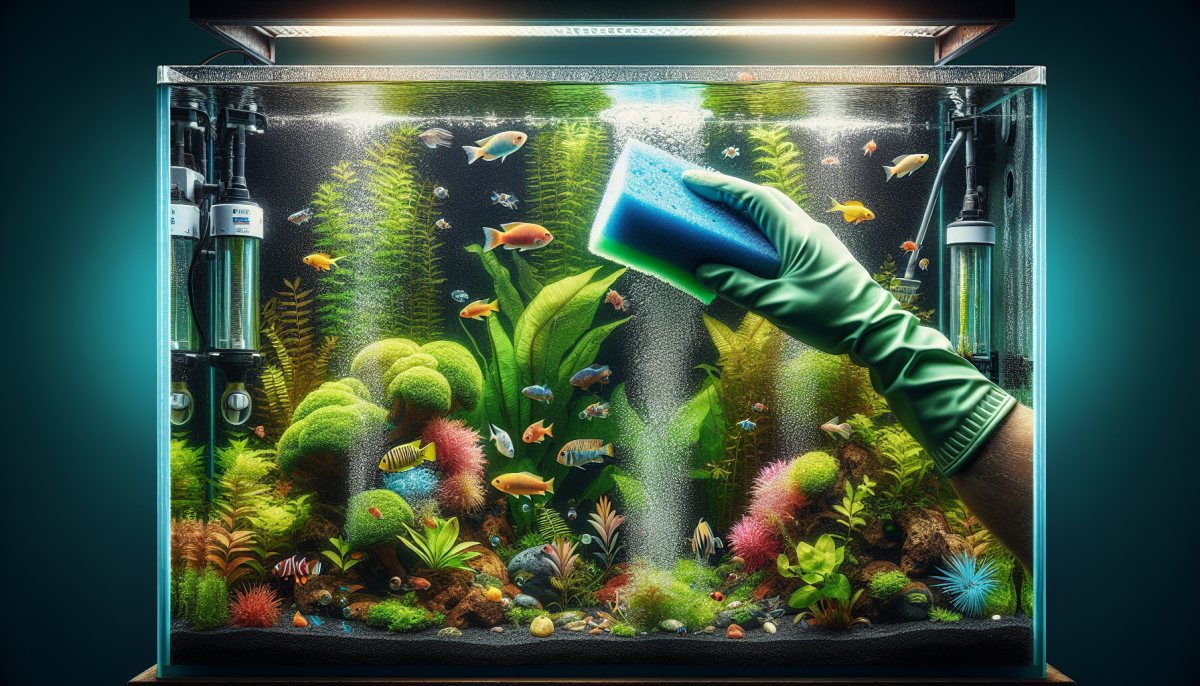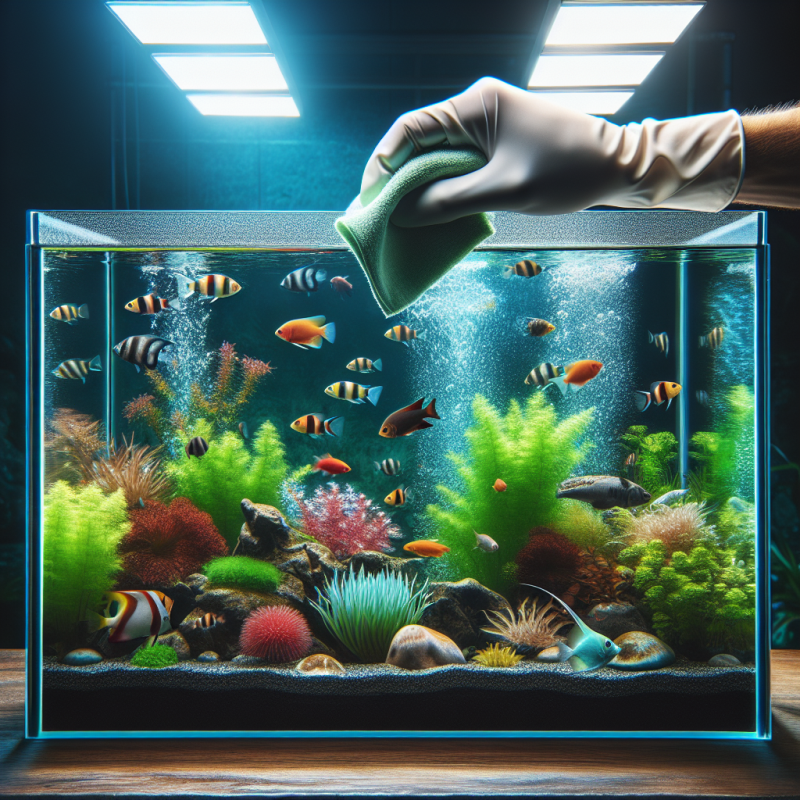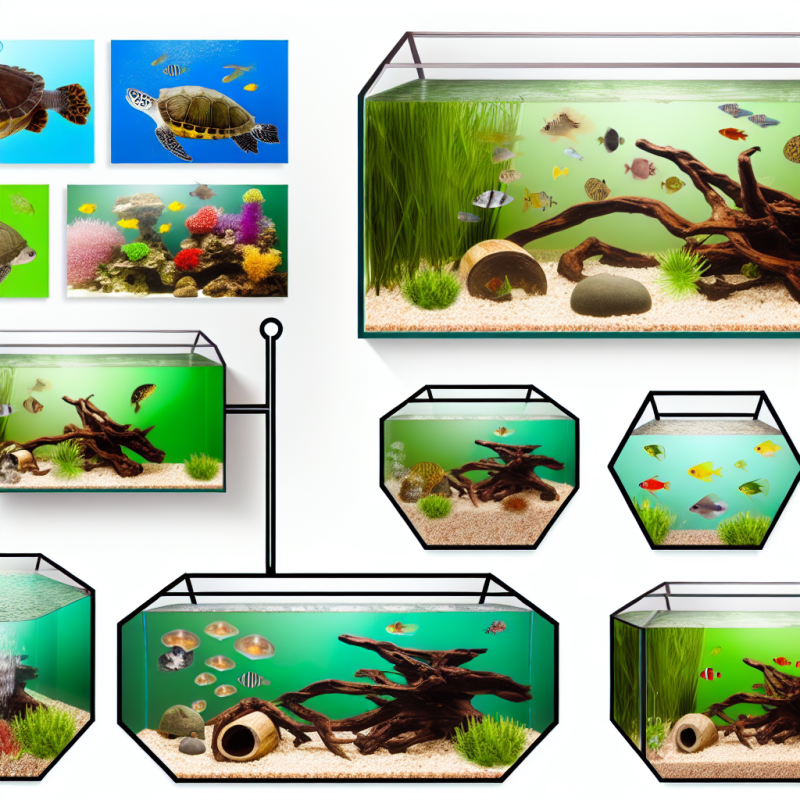Keeping your aquarium clean and healthy can be a difficult task, but it is necessary for the wellbeing of your fish and other aquatic animals. With the proper routine maintenance, water quality can be improved, and your fish can lead longer and happier lives. This article will discuss ways to clean and maintain your aquarium for optimal health.
II. Necessary Supplies to Clean Your Aquarium
When it comes to keeping your aquarium clean and healthy, having the right tools and supplies is essential. Here are some of the items you should have on hand to help keep your aquarium in top-notch condition.
Tools
- Fish net
- Algae scraper
- Gravel vacuum
- Pantyhose or fine mesh stocking
- Sponge
Supplies
- Aquarium pH test kit
- Ammonia test kit
- Aquarium conditioner
- Gravel cleaner solution
- Aquarium water filter
Make sure to have all of these supplies on hand before beginning the cleaning process, so that you can maintain the best water quality possible.
III. Preparing to Clean Your Aquarium
Now that you know why regular aquarium cleanings are important, it's time to get started on the process of cleaning your own tank. Here are a few preparations for getting started:
- Gather your supplies: a siphon, tank brush, and aquarium-safe cleaning solution.
- Turn off any electrical equipment and remove any artificial decorations from the tank.
- Plan to clean and refill the tank with fresh, dechlorinated water.
Be sure to give yourself adequate time to complete the task. Cleaning the entire aquarium can take up to an hour or more depending on the tank's size and the amount of build-up.
IV. Step-by-Step Process for Cleaning Your Aquarium
Now that you know what you need to consider when cleaning your aquarium, let’s go through the steps one-by-one!
Step 1: Preparing the Tank and Moving Fish
First and foremost, remove your fish. To minimize stress to your fish, first take out half of the water in the aquarium and leave them in the remaining water. You can use a smaller container, such as a storage container, to move the fish out of the aquarium until you finish the cleaning. Make sure the water they are transferred to is the same temperature and dechlorinated.
Step 2: Scrub and Rinse
Once all of your fish are moved to a safe location, you can thoroughly clean your aquarium. Gently scrub all of the surfaces inside the aquarium, being sure to avoid using any abrasive materials. Rinse completely with your dechlorinated water until all of the soap or cleaning solution is eliminated.
Step 3: Replace Decorations
Rinse any decorations or decorations before placing them back into the water to avoid spreading any bacteria. It’s a good idea to replace old decorations with new in order to ensure a healthy home for your fish!
Step 4: Re-Fill Tank with Treat Water
Using the same de-chlorinated water, fill the tank back up to the appropriate level. Avoid filling it all the way to the top as this may cause overflow.
Step 5: Re-introduce Fish
Now you are ready to place the fish back into the tank. Move them over gradually and carefully, making sure you only move a few fish back at a time. Monitor the water temperature and pH for the next twenty-four to forty-eight hours to make sure everything is stable.
V. Maintaining the Cleanliness and Health of Your Aquarium
Keeping your aquarium clean and healthy is important both for the creatures inside and for your aesthetic enjoyment. By following a few simple maintenance tasks, you can ensure that your aquarium stays a comfortable and thriving habitat for your aquatic pets.
Cleaning the Tank
The most basic aquarium maintenance task is to clean the tank itself, removing dirt, debris, and any other build-up. It’s important to do this regularly, as debris and build-up that is left unchecked can lead to water quality problems. In tanks with live rocks and substrate, you should use a gravel siphon or turkey baster to remove any detritus.
Changing the Water
Aquarium water should be changed on a regular basis, as this helps to keep the water quality from becoming too poor. Depending on the type of aquarium, this may be done weekly, biweekly, or more often. Partial water changes are best, removing only around 25-30% of the water. Make sure to use dechlorinated water for filling the tank back up.
Checking Water Quality
Periodically you should also check the water parameters of your aquarium. Tests for pH, ammonia, nitrite and nitrate levels should be done as they will give you an indication of the water quality. If any of these levels are too high, a water change is indicated.
Check Plants and Animals
Finally, keep an eye on the plants and animals living in the aquarium. Watch for any signs of diseases or parasites, and address the issue quickly. Check for missing or dead fish and plants, and make sure that the creatures have plenty of food to eat. Doing all of these maintenance tasks will help keep your aquarium healthy and thriving.
VI. Common Mistakes to Avoid
Even with the best of intentions, aquarium owners can still make some common mistakes when it comes to keeping their tanks clean and healthy:
- Not doing enough water changes. Regular partial water changes are one of the most important tasks a fish keeper should do, yet many owners don't do them frequently enough.
- Not checking the water parameters. Knowing what levels of ammonia, nitrates, and other seminal fluids are in the tank is an essential part of being a successful fish keeper.
- Overstocking the tank. Loading a tank with too many fish is one of the most common mistakes new fish owners make. It's not only important to acquire fish that fit within the parameters of the size of the tank, but to avoid adding too many of the same species, as this can lead to aggression.
- Not properly prepping new tank décor. It's important that any new decoration or plants used in the tank are first properly rinsed. Many contain a wax coating that can be toxic to fish if not removed before being placed into the tank.
VII. Conclusion
Maintaining a clean and healthy aquarium is vital for the health of its inhabitants. It’s important to follow the advice outlined in this article to ensure that your tank is in the best condition possible. Regular maintenance, such as cleaning the gravel, regularly checking the water quality, and adding fresh water as needed, will go a long way in keeping your aquarium clean and healthy.
Purchasing the right equipment, such as a water filter and heater, will also help to keep your aquarium clean and healthy. Finally, careful consideration must be taken when adding new fish or plants to the tank to ensure that they are the right species for the environment.
Aquariums offer a unique way to explore and enjoy the wonders of aquatic life. Following the tips outlined in this article will not only help you to keep your tank looking its best, but also ensure that your aquarium is naturally balanced and your fish and plants are healthy and vibrant.



